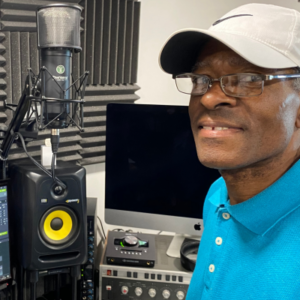Building on their successes in 1963, Martha & the Vandellas’ January 1964 release was “Live Wire”, continuing the fashion for two syllable titles for the group’s songs. The song was written by Holland, Dozier, Holland and produced by Brian Holland and Dozier. It features another typical baritone sax solo by Mike Terry, but was only a moderate success, reaching number forty-two on the Billboard Hot 100 Singles Chart. Two months later, the same team came up with “In My Lonely Room”, which achieved a similar level of success, reaching number forty-four on the Billboard Hot 100 Singles Chart. The studio band featured Earl Van Dyke (piano), Richard “Pistol” Allen (drums), James Jamerson (bass), Robert White and Eddie Willis (guitars), Henry Cosby (tenor sax), Mike Terry (baritone sax) and Jack Ashford (vibes), who had joined Motown in 1963.
In July, Martha & the Vandellas made a major breakthrough, when “Dancing in the Street” was released, with Betty Kelly of the Velvelettes replacing Annette Beard, who was awaiting the birth of her first child. The single rose to number two on the Billboard Hot 100 Singles Chart and number eight on the Billboard R&B Singles Chart, earning Motown another gold disc. Perhaps more significantly, the single sold well in the UK, climbing to number eight on the UK Official Pop Singles Chart, and also in Germany, where it peaked at number thirty-six.

In the early days at Motown, only a few singles were released in the UK, on a variety of small labels such as London American, then Fontana. As the number of releases increased, deals were struck with first Oriole, then EMI’s Stateside imprint. It was this last label that really broke Motown in the UK. With the Martha & the Vandellas’ record also charting in Germany, Australia, New Zealand, Canada and elsewhere, Gordy could see the potential for increasing world-wide sales for Motown songs. In 1964 and again in 1965, Motown artists came to the UK to perform, establishing a platform for increasing popularity.
As a result “Dancing in the Street” soon became a classic, covered by The Mamas and The Papas, David Bowie & Mick Jagger, the Kinks, Van Halen and several more artists. The UK covers were particularly successful. The David Bowie and Mick Jagger version earned a gold disc on the 1st September 1985 for over 500,000 copies sold in the UK. The Kinks also had great success with their version in 1965, drawn from the parent album “Kinda Kinks”, with the single peaking at number three on the Official UK Pop Singles Chart.
In addition the single is featured on a compilation CD entitled “Various Artists Dancing In The Streets”, that was released on Universal Music Special Markets (2009). It was certified silver in the UK according to the BPI (British Phonographic Industry) on the 27th July 2013.
The song was co-written by Mickey Stevenson, Marvin Gaye and Ivy Jo Hunter, and was produced by Stevenson, who had the original idea for the song, when he saw a group of young people dancing around the pools of water created by open fire hydrants on a hot day that summer. He showed the outline to Marvin Gaye, as a ballad, but the two of them then developed it as a more up-tempo dance tune, which they took to Kim Weston. She wasn’t keen to record it, but Martha Reeves liked it and suggested turning it into a real party number. Ivy Jo Hunter joined Stevenson and Gaye to add the musical touches that would make the song so memorable. Martha & the Vandellas recorded it with all the swing and verve of a Mardi Gras street party, with the session band really enjoying themselves!
The band was larger than for previous recordings by the group, with a bigger horn section to create the right mood. The three guitarists led the way, Robert White, Eddie Willis and Joe Messina. James Jamerson (bass) was joined by Marvin Gaye on drums, Jack Ashford on vibes, tambourine and other percussion, and Ivy Jo Hunter on percussion. Hunter used a tyre iron to hammer out the dance beat. The powerful horn section consisted of Paul Riser and George Bohanon on trombones, Herbert Williams and Russ Conway on trumpets, and stalwarts Henry Cosby (tenor sax) and Thomas “Beans” Bowles (baritone sax). The horn section’s contribution to the driving rhythm of the track was outstanding.
To add to the fun, Stevenson and Hunter sang additional backing vocals. It is not difficult to imagine everyone having a great time in Studio A as the various tracks were put together. The vocal track was completed in just two takes. The single set a new bench-mark for Motown; the sound really was the Sound of Young America.

Just a few months later, in November, virtually the same team came together in Studio A to record the follow-up single “Wild One”, co-written and co-produced by Stevenson and Hunter. It is a tribute to bikers, with a backing track derived from the “Dancing in the Street” sessions, but it was probably too similar to that iconic song. It charted, nevertheless, peaking at number thirty-four on the Billboard Hot 100 Chart and number eleven on the Billboard R&B Singles Chart. Benny Benjamin took Marvin Gaye’s place, Mike Terry replaced “Beans” Bowles and Joe Messina dropped out. It was another good year for the group, but they were about to lose their top girls group ranking to stablemates the Supremes.

















Such as it was in 1964. The Vandellas were as popular as they would ever be…only matched by “Jimmy Mack” in 1967 but recorded in 1964. Thus, 1964 was a banner year for The Vandellas just as it would become for The Supremes! 1964 was truly a “Good Year” for Motown and the “Public’s Ears”!
Hello Zane,
Thank you for your patience, and apologies for taking so long to respond to your email. You are absolutely right – 1964 was indeed a landmark year for Martha and the Vandellas, with Dancing in the Street capturing the spirit of the times and cementing their place in Motown history. As you note, the later release of Jimmy Mack (though recorded in 1964) kept their popularity alive well into 1967.
It was also a year that truly transformed The Supremes into international stars, and together these successes made 1964 a remarkable moment for Motown and for the listening public. A genuine “good year” for the label, and for the ears of audiences on both sides of the Atlantic.
Best regards,
Kevin Tomlin
Music Historian
Author
Visual Artist
Teacher
Company Director